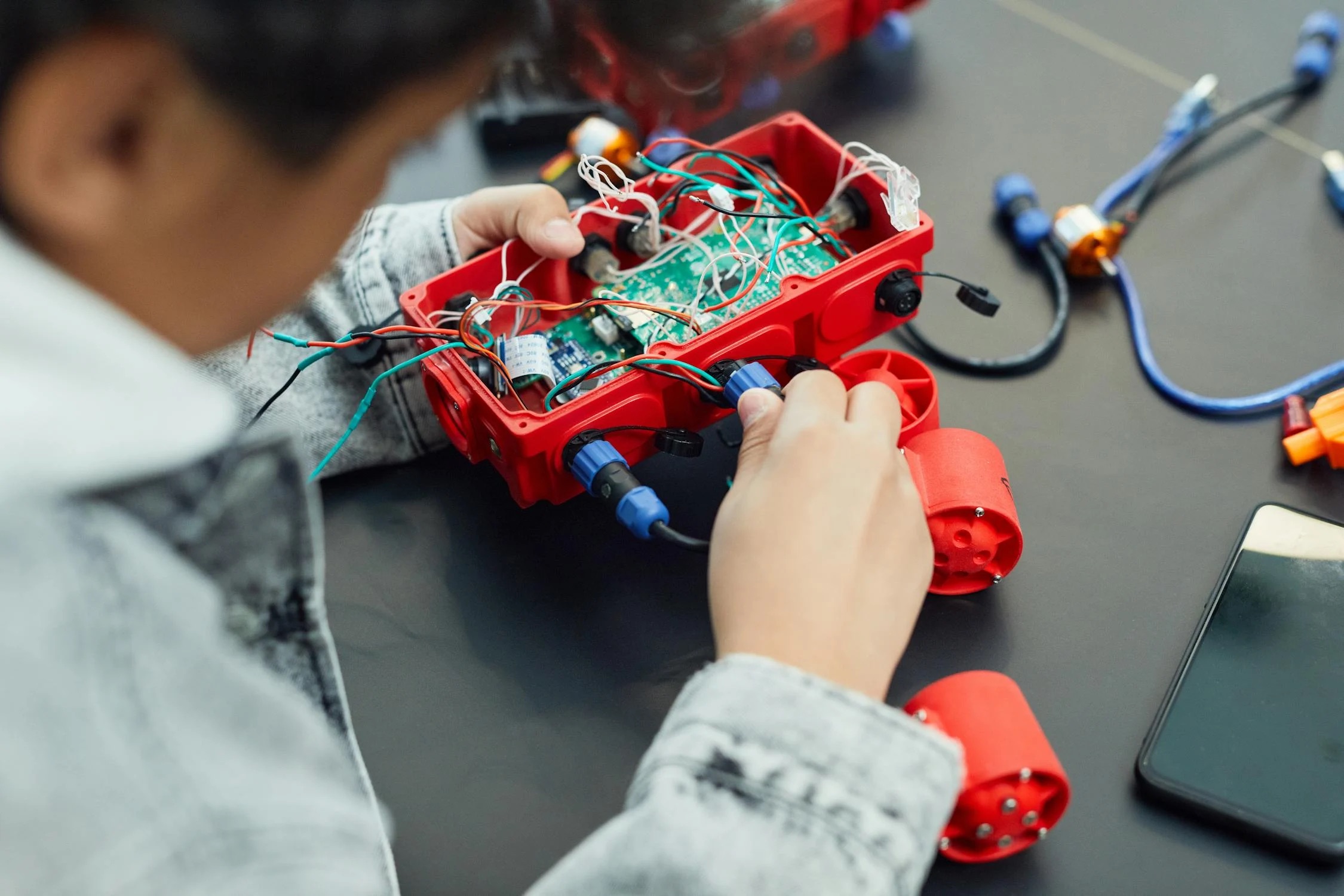
Science is all about curiosity. Kids naturally want to know why stars twinkle, how plants grow, and what makes their toys spin. But making science understandable — and exciting — can take a little extra creativity on your part. That’s where the right tools come in.
Whether you’re a seasoned science educator or just diving into teaching STEM, these five tools will help you turn everyday lessons into stimulating, hands-on experiences that students won’t forget. And they make science fun rather than intimidating!
Science isn’t just about facts and formulas. It’s about exploration, discovery, and a hands-on approach to understanding the world. Tools that engage kids’ senses through hands-on science learning — whether via screens, experiments, or tactile resources — play a crucial role in igniting their passion for learning.
Want to make a lesson on circuits unforgettable? A hands-on kit can do that. Struggling to explain the vastness of the solar system? An interactive app can bridge the gap. With the right tools, you’ll watch your students light up when they grasp topics they once struggled with.
Now, let’s explore five tools that are sure to revolutionize your classroom!
1. Mystery Science
Got a classroom full of curious minds but not enough lesson-planning time? Mystery Science is a good option. This online resource is packed with ready-made science lessons, videos, and step-by-step activities tailored to elementary and middle-school students.
With Mystery Science, you choose a topic — like weather, ecosystems, or human anatomy — and gain access to engaging, bite-sized videos paired with hands-on activities. Each module is designed to start from a big question (“Why is the sky blue?”) and invites students to discover the answers themselves.
Why it’s amazing :
- No prep needed for you — just hit play and go.
- Encourages critical thinking by letting kids solve real-world problems.
- Designed to captivate all kinds of learners, from visual to tactile.
Say goodbye to boring worksheets and hello to “Aha!” moments.
2. Kano’s Coding Kits
There have been countless studies into why it’s valuable to teach kids to code. Learning a key aspect of modern science is one of them. But coding is also proven to teach kids about problem-solving, creativity, collaboration, open-mindedness and perseverance. Want to teach coding and make it fun? That’s where Kano’s Coding Kits step in. These kits provide everything your students need to build and code their own projects, like games or even custom light shows.
Students follow step-by-step instructions to assemble a device — like a mini computer or wand — and then use block coding to make it work. It’s simple enough for beginners, but advanced students can switch to languages like Python or JavaScript to explore deeper.
Why it’s amazing:
- Encourages creativity and technical skills by blending hardware and software.
- Introduces core programming concepts in a way even younger kids can grasp.
- Helps students see the magic behind everyday tech.
With Kano, you’ll help kids turn curiosity into tangible creations.
3. PhET Interactive Simulations
Remember struggling to visualize abstract scientific concepts as a student? PhET Interactive Simulations by the University of Colorado is here to bridge that gap.
This free online resource features tons of simulations across physics, chemistry, biology, and math. For example, students can “manipulate” molecules in a simulation to better understand states of matter. These interactive models simplify big ideas and make them click.
Why it’s amazing:
- Free to use, making it accessible for any educator.
- Engages kids with its “learn by doing” approach.
- Versatile enough to fit into any lesson plan.
Next time you’re explaining forces, instead of a static diagram on the board, show students how forces interact with PhET. Watching the “lights go on” in their heads will make your day.
4. Snap Circuits
Electricity and circuits can feel abstract to kids — until they actually build one themselves. Enter Snap Circuits, a hands-on learning tool that teaches children the basics of electronics through do-it-yourself kits.
With Snap Circuits, kids use easy-to-connect modules to construct circuits and learn how they power everything from lights to sound effects. Each kit comes with dozens of projects, from a simple flashlight to an alarm system.
Why it’s amazing:
- Sparks curiosity by letting kids play and experiment.
- Breaks down complex scientific principles into visual, hands-on learning.
- Builds confidence as students successfully complete each project.
This tool turns abstract terms — like resistance and current — into something they can see, touch, and understand!
5. SkySafari App
If traditional star charts feel overwhelming and dated, meet SkySafari 7 — a modern way to bring the night sky alive for your students.
SkySafari is an interactive stargazing app that transforms your phone or tablet into a window to the cosmos. Point your device at the sky, and the app instantly identifies stars, constellations, and even planets. It also tells fascinating stories about each celestial body’s history and mythological significance.
Why it’s amazing:
- Makes astronomy accessible — even for small classrooms or urban areas with light pollution.
- Helps students visualize concepts like the Earth’s rotation or the scale of the Solar System.
- Inspires awe by connecting science to the universe’s grand beauty.
Have students practice finding their zodiac constellations, or host a “mobile planetarium show” right in your classroom.
Science education has evolved far beyond textbooks and chalkboards. Tools like Mystery Science, Kano’s Coding Kits, PhET Simulations, Snap Circuits, and SkySafari keep your lessons engaging, interactive, and exciting for young learners. By giving kids opportunities to actively discover, you’re not just teaching them science — you’re inspiring a lifelong love of learning. Cheesy but true!